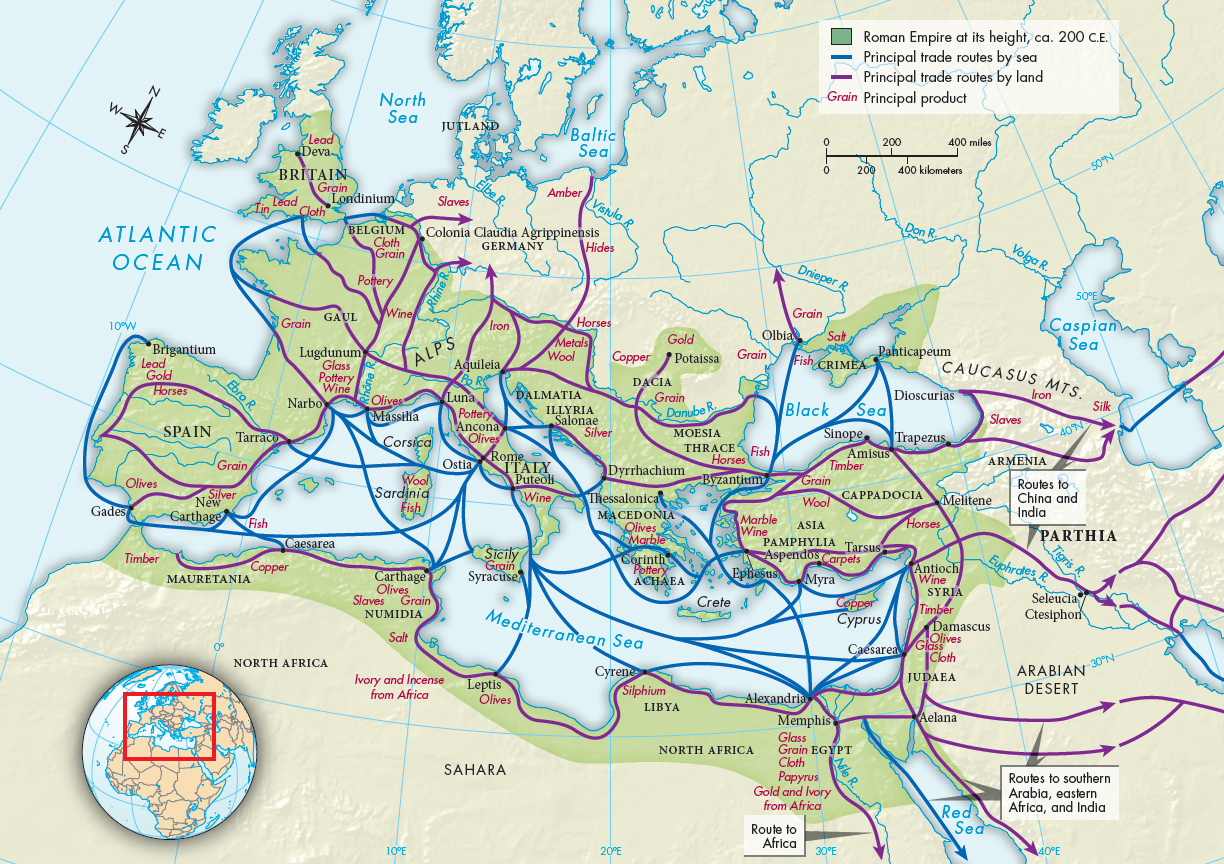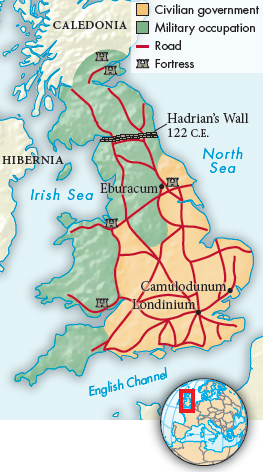Prosperity in the Roman Provinces
As the empire grew and stabilized, many Roman provinces grew prosperous. Peace and security opened Britain, Gaul, and the lands of the Danube to settlers from other parts of the Roman Empire (Map 6.2). Veterans were given small parcels of land in the provinces, becoming tenant farmers.

CONNECTIONS: To what extent did Roman trade routes influence later European trade routes?

The rural population throughout the empire left few records, but the inscriptions that remain point to a melding of cultures. One sphere where this occurred was language. People used Latin for legal and state religious purposes, but gradually Latin blended with the original language of an area and with languages spoken by those who came into the area later. Religion was another site of cultural exchange and mixture. Romans moving into an area learned about and began to venerate local gods, and local people learned about Roman ones. Gradually hybrid deities and rituals developed. The process of cultural exchange was at first more urban than rural, but the importance of cities and towns to the life of the wider countryside ensured that cultural exchanges spread far afield.
The garrison towns that grew around provincial military camps became the centers of organized political life, and some grew into major cities. To supply these administrative centers with food, land around them was cultivated more intensively. Roman merchants became early bankers, loaning money to local people and often controlling them financially. Wealthy Roman officials also sometimes built country estates in rural areas near the city.
During the first and second centuries, Roman Gaul became more prosperous than ever before, and prosperity attracted Roman settlers. Roman veterans mingled with the local population and sometimes married into local families. There was not much difference in many parts of the province between the original Celtic villages and their Roman successors.
In Britain, Roman influence was strongest in the south, where more towns developed. Archaeological evidence indicates healthy trading connections with the north, however, as Roman merchandise moved through the gates of Hadrian’s Wall in exchange for food and other local products.
Across eastern Europe, Roman influence was weaker than it was in Gaul or southern Britain, and there appears to have been less intermarriage. In Illyria (ih-
The Romans were the first to build cities in northern Europe, but in the eastern Mediterranean they ruled cities that had existed before Rome itself was even a village. Here there was much continuity in urban life from the Hellenistic period. There was less construction than in the Roman cities of northern and western Europe because existing buildings could simply be put to new uses.
More than just places to live, cities were centers of intellectual and cultural life. Their residents were in touch with the ideas and events of the day, in a network that spanned the entire Mediterranean and reached as far north as Britain. As long as the empire prospered and the revenues reached the imperial coffers, life in provincial cities — at least for the wealthy — could be nearly as pleasant as that in Rome.